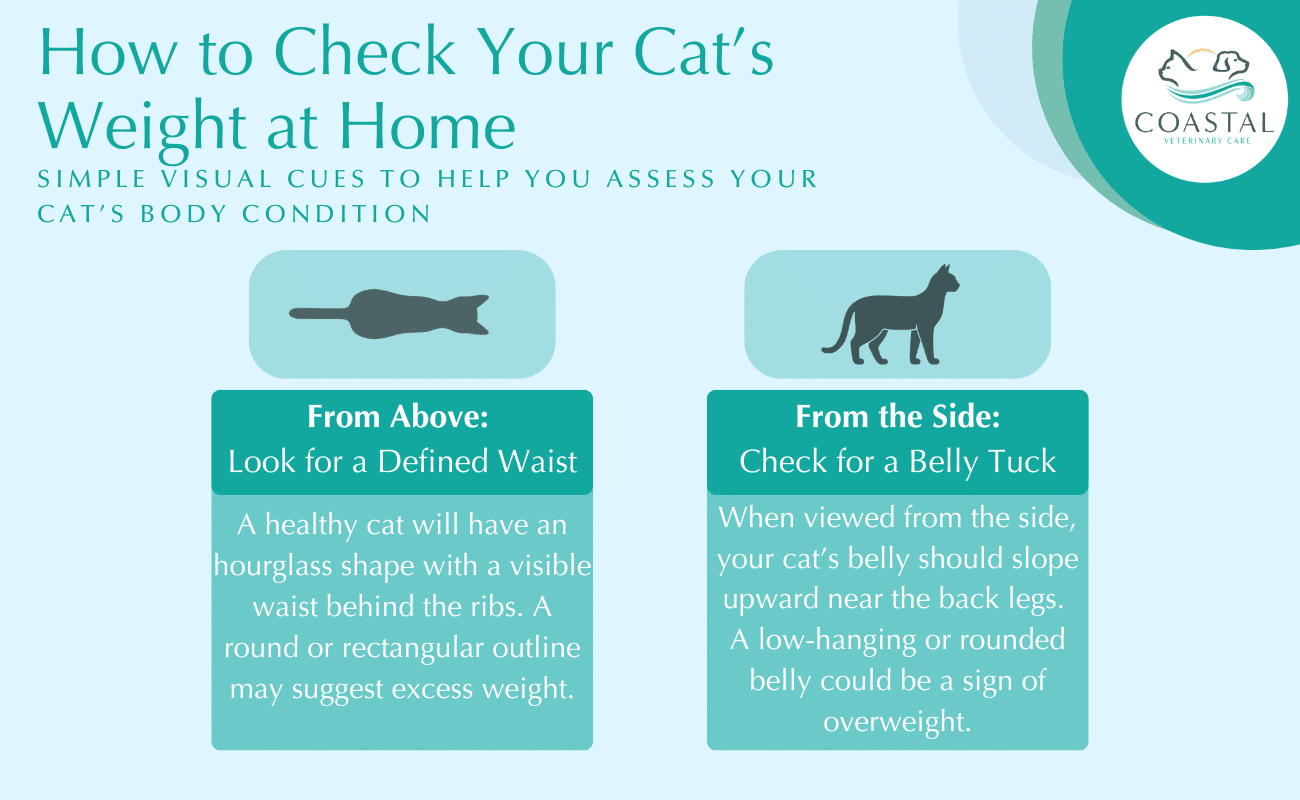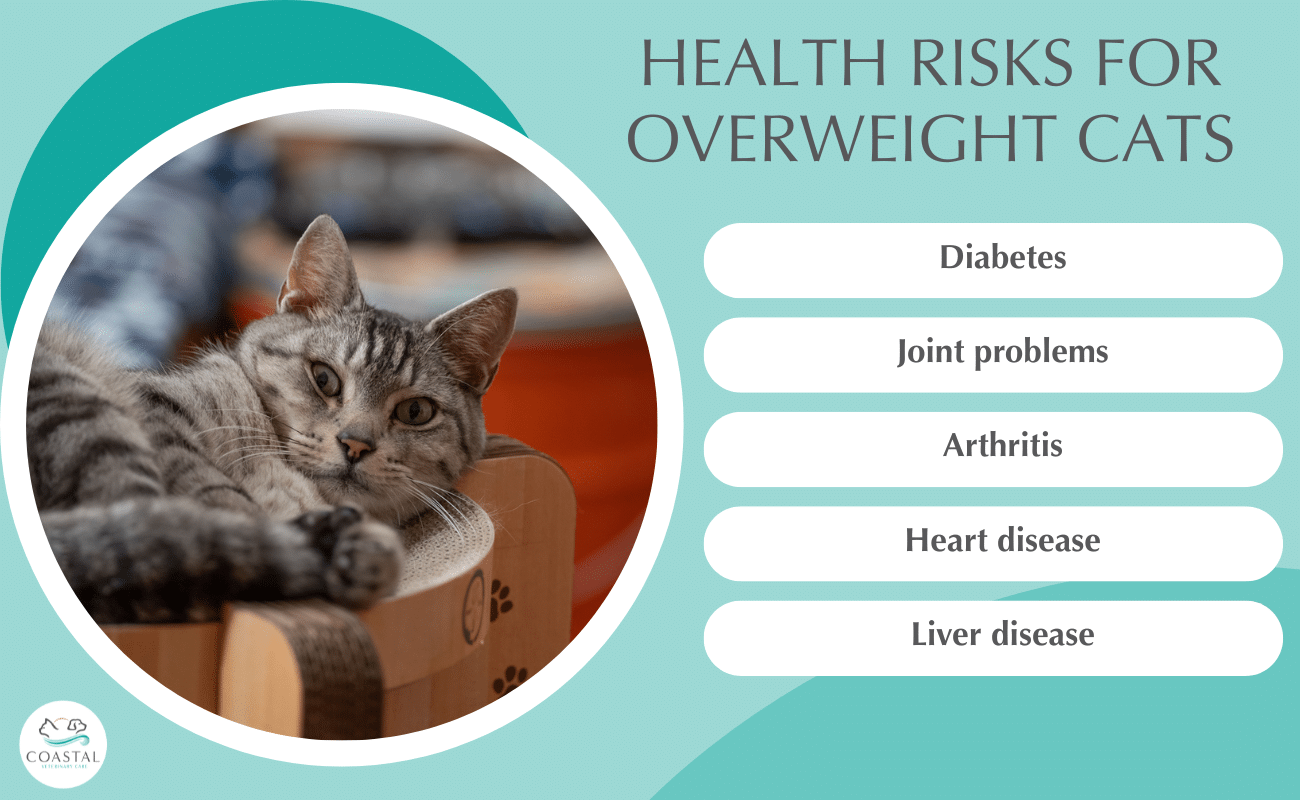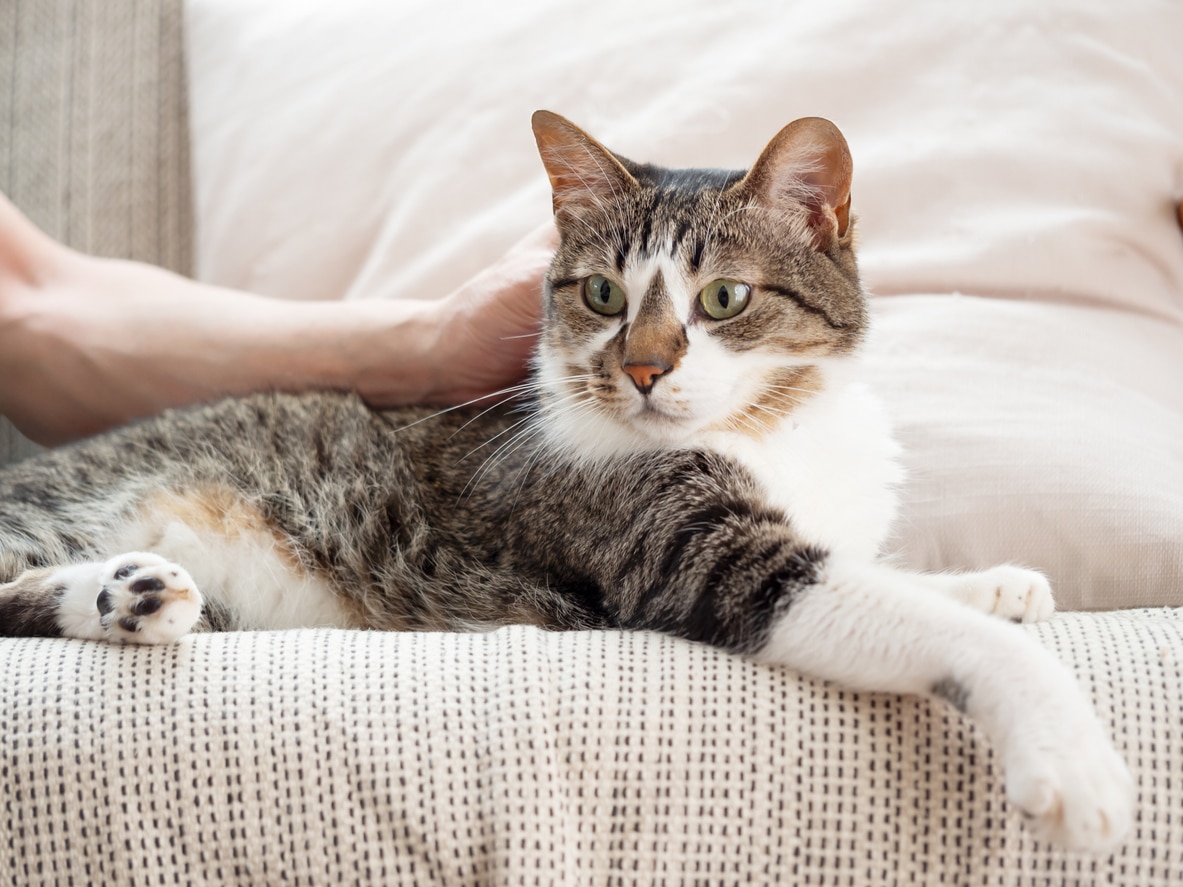How Do I Know If My Cat Is Overweight?
Quick Answer: You can tell if your cat is overweight by checking if you can easily feel their ribs with light pressure, looking for a visible waist when viewed from above, and watching for signs like difficulty jumping or reduced activity.
If you’ve been wondering whether your feline friend is carrying extra weight, you’re not alone. Many cat owners struggle to determine if their cat is at a healthy weight or if those extra ounces are becoming a concern. Knowing how to spot the signs of an overweight cat is crucial for your furry friend’s health and happiness.
In this guide, we’ll cover:
-
- How to visually assess your cat’s body shape
- Simple hands-on checks you can do at home
- Understanding healthy weight ranges for different cats
- Health risks of excess weight
- When to contact your vet for help
What Does an Overweight Cat Look Like?
One of the easiest ways to determine if your cat is carrying excess weight is by observing their body shape from different angles. A healthy cat should have distinct visual cues that indicate they’re at their ideal weight.
Looking at Your Cat from Above
When you look at your cat from above, you should see a clear waist area behind their ribs. This creates an hourglass-like shape that’s easy to spot in cats at a healthy weight. If your cat looks more like an oval or rectangle, they may be carrying extra weight.
Looking at Your Cat from the Side
From the side, a healthy cat should show a slight indentation or “tuck” where their belly meets their back legs. If you notice your cat’s belly hangs down or appears rounded without any slight indent, this could indicate excess fat.

Long-haired cats can be trickier to assess visually since their fur can hide their true body shape. You might need to rely more on hands-on checking with these fluffy friends. Pay attention to how your cat moves – overweight cats often show reluctance to jump onto furniture, walk more slowly, or get tired more easily during play.
Simple At-Home Tests to Check Your Cat’s Weight
The most reliable way to assess your cat’s weight at home is through a hands-on examination. This method works well for all cats, including long-haired cats, where visual assessment might be challenging.
The Rib Test
Start with the rib test – the most important check you can do. Place your hands gently on both sides of your cat’s chest, just behind their front legs. With light pressure, you should easily feel each rib. The ribs should feel like the back of your hand when you make a loose fist.
If you have to press firmly to feel your cat’s ribs, or can’t feel them at all, your feline friend may be carrying excess weight. If the ribs feel very prominent and sharp, your cat might be underweight.
The Spine Check
Check your cat’s spine by running your hand along their back. You should easily feel the spine, but it shouldn’t be sharp or prominent. The area should have a small amount of fat covering.
If the spine feels very bony and sharp, your cat may be underweight. If you have to press hard to feel the spine, this could indicate excess fat.
The Hip Test
Examine your cat’s hips by placing your hands on their hindquarters. Like the ribs, you should feel the hip bones with gentle pressure, but they shouldn’t be sharp or overly prominent.
If your cat’s hips feel very bony, they may be too thin. If you can’t feel the hip bones easily, your feline friend may need to lose some weight.
Understanding Healthy Weight Ranges
Determining what constitutes a healthy weight for your cat depends on your cat’s breed, age, and body structure. Most adult cats fall into a weight range of 8 to 12 pounds, but this varies significantly.
Your cat’s breed plays a major role in determining their ideal weight. Larger breeds like Maine Coons may naturally weigh 15 to 20 pounds when healthy, while smaller breeds like Siamese cats might only weigh 6 to 10 pounds.
Body Condition Score System
Veterinarians use a Body Condition Score (BCS) system to assess cats more accurately than just weight alone. Your vet will use this scoring system to determine your cat’s current weight category. The BCS considers your cat’s overall body shape, not just the scale number.
Age Considerations
Age matters when assessing your cat’s current weight. Kittens are naturally growing and gaining weight, while older cats may experience changes in their metabolism and activity levels.
Lifestyle Factors
Indoor cats often face a higher risk of weight gain because they tend to be less active and may eat out of boredom.
Remember that even an extra pound can make a significant difference for cats. Unlike dogs, cats are smaller animals where excess weight has a bigger impact on their health.
Health Risks of Carrying Extra Weight
Carrying excess weight puts your cat at increased risk for several serious health conditions:

-
- Diabetes: Overweight cats are much more likely to develop diabetes, which requires daily insulin injections and careful monitoring.
- Joint problems and arthritis: Excess fat puts additional strain on your cat’s joints, making it painful to move. This creates a cycle where pain leads to less activity and more weight gain.
- Heart disease: Extra weight makes the heart work harder, which can lead to heart problems over time. Overweight cats may also experience breathing difficulties.
- Liver disease: When cats carry too much excess weight, the liver works harder to process the extra fat, which can lead to hepatic lipidosis.
Perhaps most concerning is that overweight cats typically have shorter lifespans than cats at a healthy weight. Maintaining a healthy weight is one of the most important things you can do for your feline friend.
When to Contact Your Vet
While learning to assess your cat’s weight at home is valuable, there are times when professional veterinary care becomes essential.
Warning Signs That Need Professional Attention
-
- Unexplained weight gain (especially if it happens quickly)
- Daily activities affected (if your furry friend seems uncomfortable, has trouble grooming, or shows breathing difficulties)
- Difficulty moving (reluctance to jump, climb, or play that seems more severe than normal)
- Changes in eating or drinking (Increased appetite with weight gain, or changes in water consumption)
Professional Veterinary Support
Regular check-ups with your vet are crucial for monitoring your cat’s weight over time and catching problems early. If you’re unsure about your cat’s weight category, your veterinarian can provide personalized advice based on your cat’s specific needs.
For cats that need to lose weight, your vet might recommend a prescription diet or specialized food designed for feline weight loss, along with guidance on the right portion size for your cat’s current weight and activity level.
Helping Your Cat Reach a Healthier Size
If you’ve determined that your cat needs to lose some extra weight, the good news is that most cats can successfully reach a healthier size with the right approach. Here are the key steps to help your feline friend:
Step 1: Evaluate Your Cat’s Diet
Start by evaluating your cat’s current diet. Many cats gain weight because they’re eating too much regular food or getting too many treats. Work with your vet to determine the appropriate portion size for your cat’s target weight.
Step 2: Consider Specialized Food
Consider switching to a specialized food designed for weight management. These foods are lower in calories but still provide all the nutrients your cat needs. Some cats do better on prescription diets specifically formulated for weight loss.
Step 3: Increase Activity Gradually
Increase your cat’s activity level gradually. Indoor cats especially benefit from more interactive play sessions. Try using toys that encourage your cat to chase, jump and move. Even a few minutes of active play several times a day can make a significant difference.
Step 4: Monitor Progress
Monitor your cat’s progress regularly using the same hands-on techniques you learned for an initial assessment. Weight loss in cats should be gradual – losing just a few extra ounces per week is ideal. Rapid weight loss can be dangerous for cats.
Be patient with the process. Just like people, cats need time to adjust to new eating habits and increased activity. Consistency is key to helping your feline friend reach and maintain their ideal weight.

Keeping Your Cat Happy and Healthy
Learning to recognize when your cat is overweight is an important skill that can help you keep your furry friend healthy and happy for years to come. By using visual cues and hands-on assessment techniques, you can monitor your cat’s weight and catch problems early.
Remember that every cat is different, and what’s normal for one cat may not be normal for another. When in doubt, consult your veterinarian for professional guidance. At Coastal Veterinary Care, we welcome new patients and are here to help you keep your feline companion at their healthiest weight.
Choose Coastal Veterinary Care in Myrtle Beach, SC
At Coastal Veterinary Care, we can help you determine an appropriate veterinary schedule that best supports your pet’s needs. From planning regular routine visits to understanding what to look for to identify when your pet may need to be seen to evaluate a specific injury or illness, we are here to help you make sure your pet gets the best possible care. Contact us today to learn more about why we are a trusted choice among pet owners in the Myrtle Beach, SC, area or to schedule an appointment!
